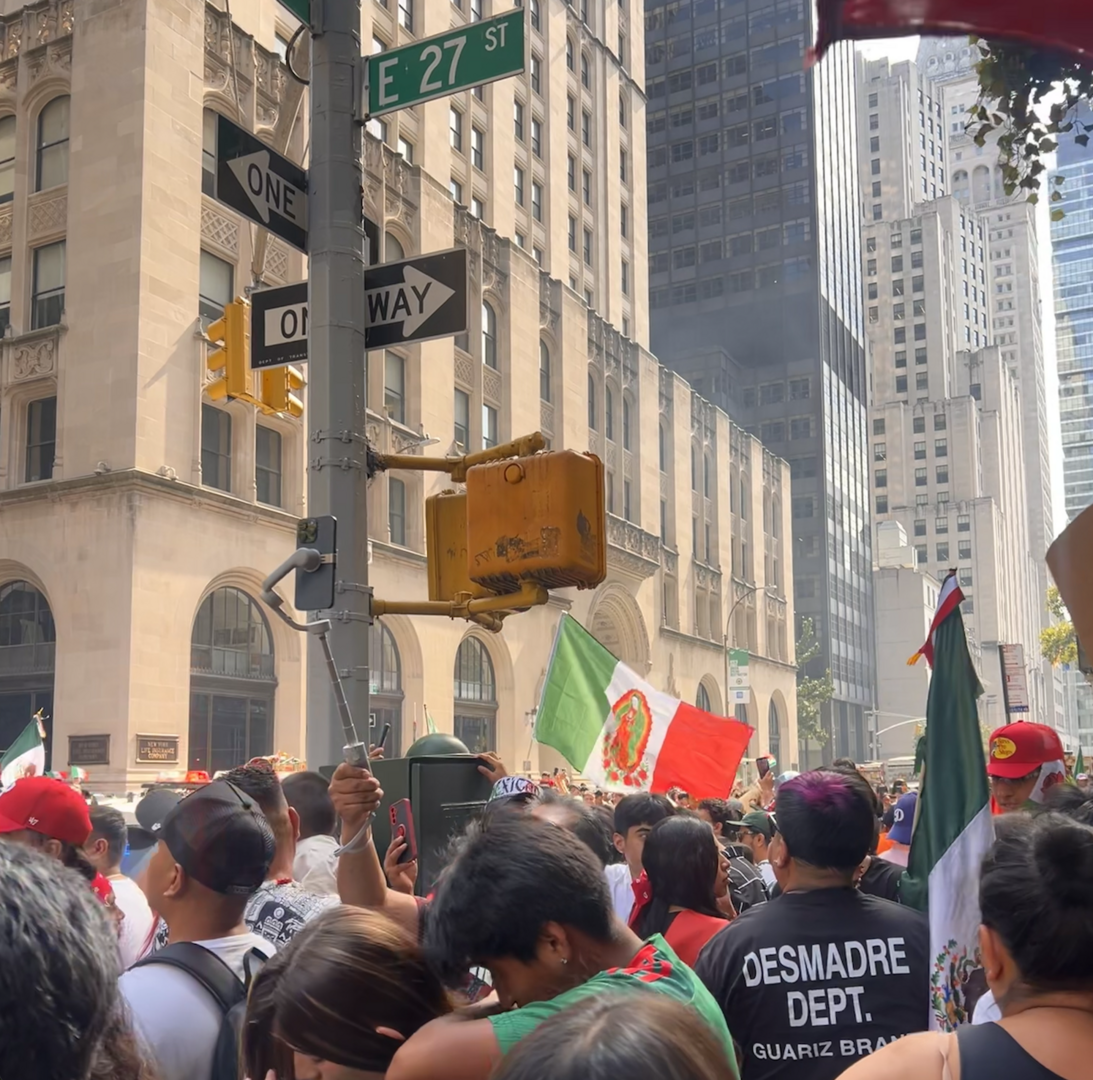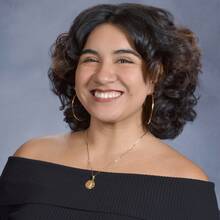Mariachi trumpets, the smell of baked goods and the cheers of hundreds of people celebrating Mexican Independence Day flooded Manhattan on Sept. 15. The day marked the beginning of Hispanic Heritage Month in the United States, which runs until Oct. 15. Along with Mexico, a plethora of Latin American countries, including Guatemala, Honduras and Nicaragua celebrate their independence days throughout the course of the 30 days.
Established as a month of celebration in 1988—a direct result of the civil rights movement and its strides to recognize the history of minority communities in the United States—the celebrations today consist of parades, city-sponsored events and even celebrations organized by foreign government consulates in many cities across the country. Mexico celebrates its independence day every year on Sept. 16, and this past weekend I had the chance to attend both the Manhattan parade and the first-ever Times Square Mexican Independence Day celebration.
As a first-generation Mexican-American far from home, I jumped at the chance to connect with other people of similar backgrounds. Born and raised in Southern California, I was blessed to grow up surrounded by other children of immigrants—many of them also Mexican or Hispanic. And during my college years, I joined clubs and made friends who also fought to stay connected to their heritage.
Celebrating this year away from home and the community I had formed over the past four years, admittedly, made me homesick. Watching groups of families in matching Mexico jerseys cram into the subway reminded me of my own nuclear and extended family. Would the celebrations I was about to attend look anything like the ones I had attended miles and borders away in years past in California? My longing for home only strengthened my desire to attend these events.
This year’s celebration in Times Square was the first to be celebrated in that iconic tourist spot. The event was one of many celebrating the 214th anniversary of Mexican independence from Spain. The celebration was advertised as featuring performances from La Banda Brígido Santamaría de Tlayacapan (Mexico’s oldest orchestra), Mariachi Internacional Tapatio and others.
Before even arriving at Sunday’s events, I knew I had to keep my eyes peeled for Catholic images and symbolism. Growing up in my largely Mexican community, I am aware that Catholicism is intimately intertwined with the culture in the Mexican diaspora, brought to the region during the era of Spanish colonization. Now, as an America employee, I am even more keen to find the Catholic angle wherever I go!
Today, Catholicism continues to be the most prominent religion in Mexico, and it shapes everything from everyday sayings (“Si Dios quiere” is a common affirmative response) to its visual presence in Mexican and Chicano streetwear and identity, like gold pendants of the Virgen de Guadalupe or crosses worn as jewelry by small children. Regardless of Mexicans’ Catholic practice on an individual level, Catholic imagery and items are omnipresent in grocery stores around the country.
And as the number of individuals with Mexican origins continues to grow in the United States, this visual Catholic presence grows with it. According to the Pew Research Institute, there were an estimated 37.2 million Hispanics of Mexican origin in the United States as of 2021. Mexicans make up the largest population of Hispanics in the United States. Our large and growing presence in this country was proudly on display at the celebrations on Sept. 15.

Catholic influence on Mexican culture is not limited to sayings and jewelry. At the parade in Manhattan, I did not have to look far to find it. Aside from the constant cheering and delicious smells wafting from the food vendors walking by, there was an abundance of Virgin Mary images on the parade floats and elsewhere. Many flags were modified by parade-goers to depict the mother of God as the centerpiece of the Mexican flag, replacing the official coat of arms, which depicts an eagle eating a snake while perched on a cactus.
Outside the parade route, there were dozens of street vendors selling shaved ice, chopped fruit, churros and chicharrones (crispy, wheel-shaped fried pork belly) in portions bigger than I could possibly eat. They honked horns attached to their carts to draw the attention of hungry parade-watchers like myself, who bought the chicharrones, doused in hot sauce, by the bagful.
The parade participants and their floats ranged from Mexican restaurants in the area to nightclubs promoting their upcoming events, to legal advisors advertising their services. A tortilleria (a shop that makes and sells tortillas) drove by, handing out free bags of tortillas and tortilla chips to those of us who were lucky.
The performers danced a range of different ballet folklorico, and others still performed mariachi and banda music, a type of Mexican regional music, to my delight. Some of the performers in the parade themselves wore images of the Virgin Mary on their garments and carried signs of devotion.
The Times Square Mexican Independence Celebration packed the square and the streets around it. Hundreds of people were in attendance, and the immense amounts of people, though overwhelming, were a tangible sign of community coming together. The fact that it occurred in Times Square for the first time is itself a sign of the growing size and influence of the Mexican community in New York City.
Where I was standing on 43rd Street facing Times Square, there was a speaker playing banda, which was ultimately louder than what we could hear from the stage. Though we could not hear the actual performers, even this little street gathering was a display of cultural pride and resilience––a cohort determined to celebrate.
The events and other celebrations like it around the country unveiled a search for belonging and community underneath all our singing and dancing. As I watched the parade and performances, I could not help but feel an underlying sorrow and unidentifiable yearning shared among the crowd. Thousands of miles and perhaps many generations away, we were once connected to the mountains and rainforests and coastal plains of Mexico. The neon lights and metal fences surrounding the performers’ stage were only further reminders of how far away from home I was at that moment. I wondered if others felt the same.
Leaving the parade and then later Times Square, I was equally excited to find myself across the street from others, strangers also dressed in their best red, white and green outfits. The small smiles we shared as we crossed paths were a reassurance that the communal sensibility and the display of pride in our heritage was not just for one night of the year.
The yearning for a place just beyond contested border walls and deadly desert valleys is also a longing for community and recognition in the country we now inhabit––and the dancing, singing and shouting were merely one way to communicate our unwavering presence in this country.







